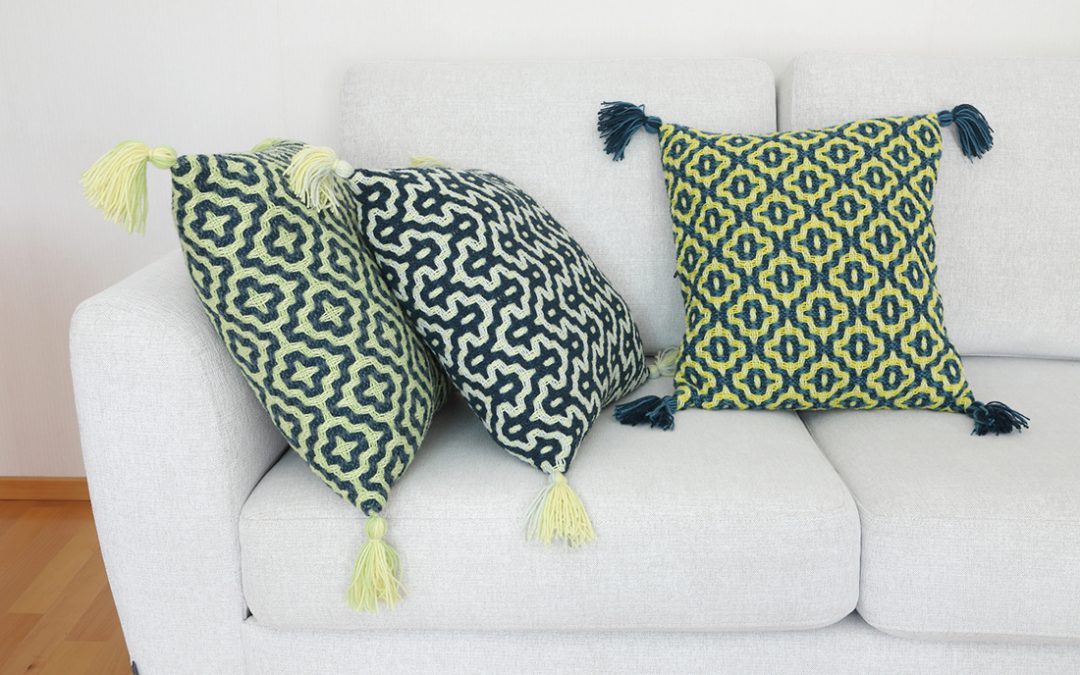The hues of the wefts were chosen to be close to the hues of the warp threads, but not exactly the same. This makes the hues of the final products vivid. Sirkka rya yarn has a stunning 147 colour selection. On the other hand, if the colours of the wefts differ too much from the colours of the warp, the pattern might become unclear.
The loom waste and apron rod ties were utilized to the tassels in the corners of the cushions.The zipper was sewn in the middle of the cushion. The inner cushion is this way easy to insert, the sewing is easy and the zipper isn’t visible, like it would be if sewn in the side.
| The warp | Sirkka rya yarn 140×3, 100 g = n. 230 m, 100 % wool, Taito Pirkanmaa Oy |
| Warp | width 48,8 cm the sett 5 ends/cm number of yarn ends 244 |
| langanmenekki | (1171) yellow 323 g and (3343) petroleum 329 g |
| Length | 5,87 m |
| Reed | 1 per dent in a 50-dent reed (metric) = 50/1 |
| Structure | Deflected double weave |
| The weft | Same as the warp thread |
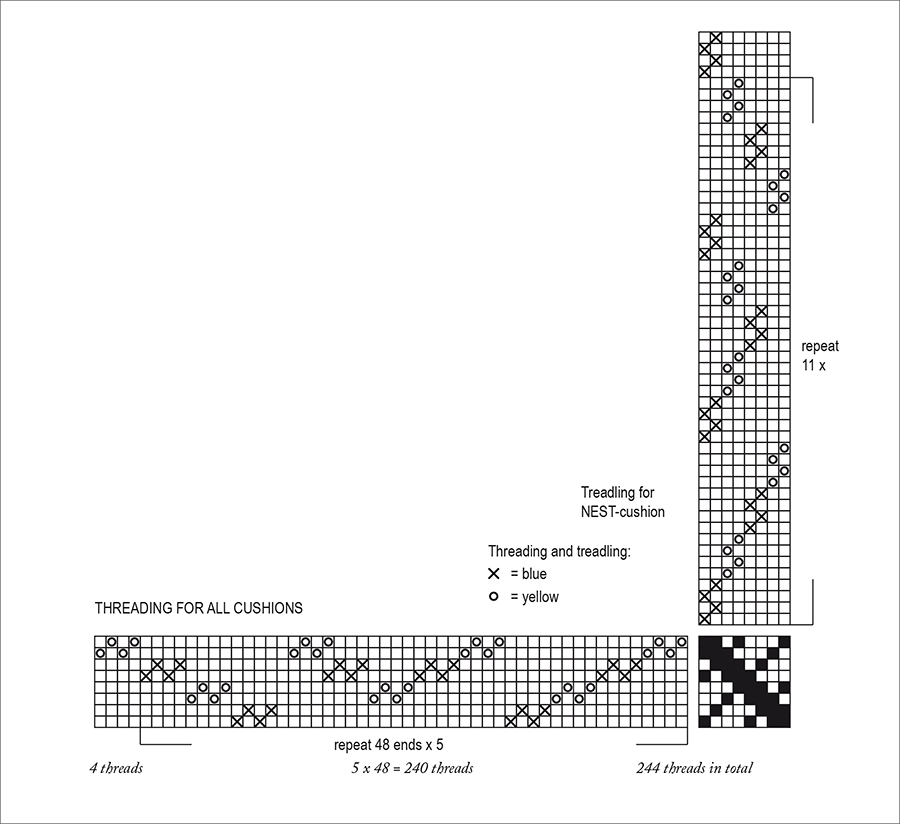
Instructions for winding the warp
Wind two warp threads at a time, holding one petroleum coloured and one yellow thread in your hand.
240 ends petroleum (3343) and yellow (1171)
4 ends yellow (1171) = 244 ends in total.
Obs. In the threading alternates 4 ends petroleum and 4 ends yellow.
Remove the outermost heddles from the shafts to create floating selvedges or leave the outermost ends unthreaded in the first place.

The warp was wound two different coloured warp threads at a time. One portee consisted of one yellow and one blue thread. To ease the threading, the ends were bundled before the threading in a way that each bundle had either four yellow or four blue threads alternating. The outermost bundles were yellow. The ends were collected to the bundles in the order indicated by the cross. The warp was threaded in this order, bundle by bundle. This procedure sped up the winding of the warp but didn’t interfere with the weaving because wool is an easy and elastic material.

Weaving instructions
Keep the sett balanced to prevent the patterns from flattening or stretching. The sett is 5 picks/cm.
You can choose the side you prefer to be the face side of the final product.
You can also design your own pattern by changing the treadling. Throw a blue weft while treadling 1., 2., 5. and 6. treadle and a yellow weft with 3., 4., 7. and 8. treadle.
Nest – square cushion
WEFT YARN needed
Yellow (6421) 60 g and
blue-green (3711) 60 g.
Tassels:
1 g blue-greeen (3711) & 3 g petroleum (3343) per tassel.
INSTRUCTIONS FOR WEAVING
Weave 2 cm with scrap wool yarn using straight treadling. Weave the repeat for 11 times plus the extra picks to balance. The sett is 5 picks/cm. Weave 2 cm with scrap yarn at the end. The length of the patterned area was approx. 106 cm.
The repeat was approx. 9,5 cm.
The patterned fabric was 98 cm x 44 cm off the loom.

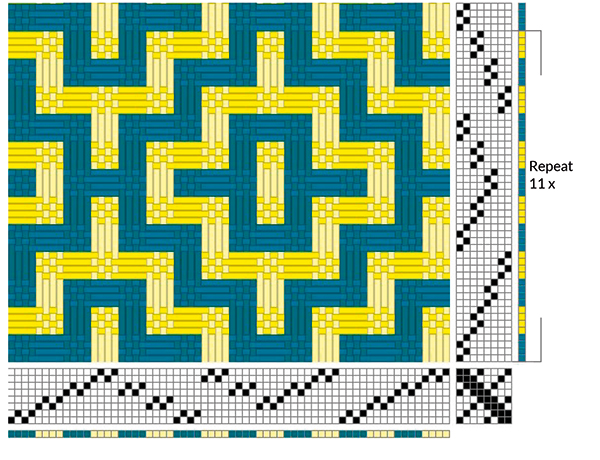
Large Cross -square cushion
WEFT YARN needed
Blue-grey (3071) 59 g and light green (6431) 59 g.
Tassels: 1 g light green (6431) & 3 g yellow (1171) per tassel.
INSTRUCTIONS FOR WEAVING
Weave 2 cm with scrap wool yarn using straight treadling. Weave the repeat for 8 times plus the extra picks to balance. The length of the patterned area is approx. 105 cm. Weave 2 cm with scrap yarn at the end.
The repeat was approx. 12,75 cm.
The patterned fabric was 93 x 44 cm off the loom.
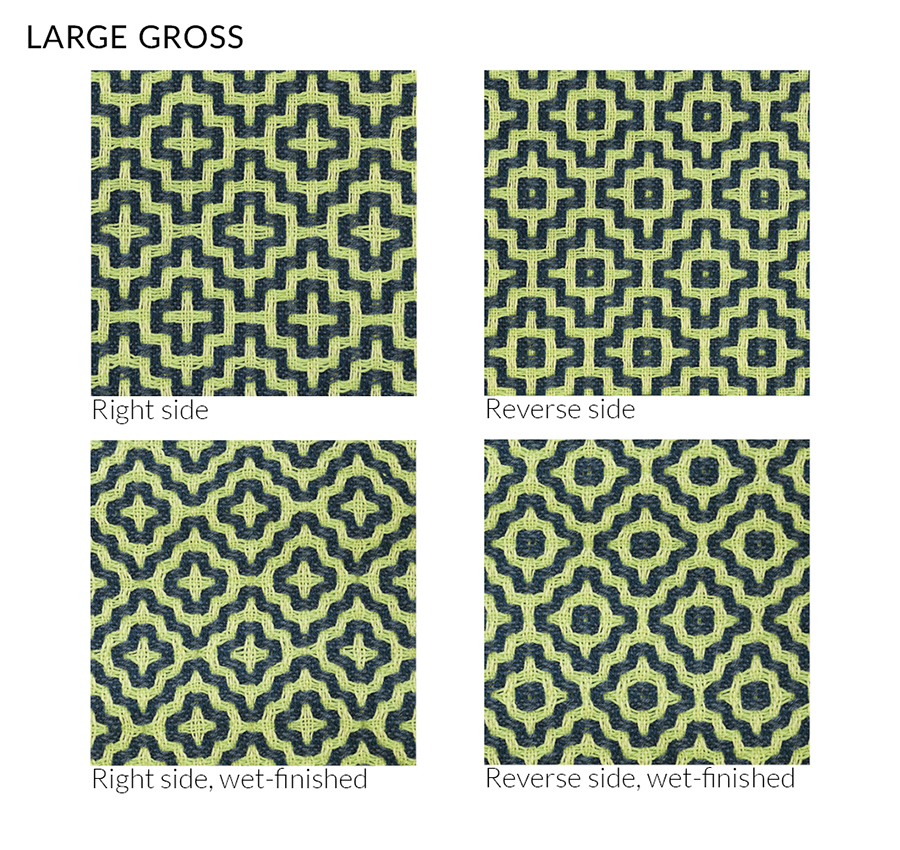
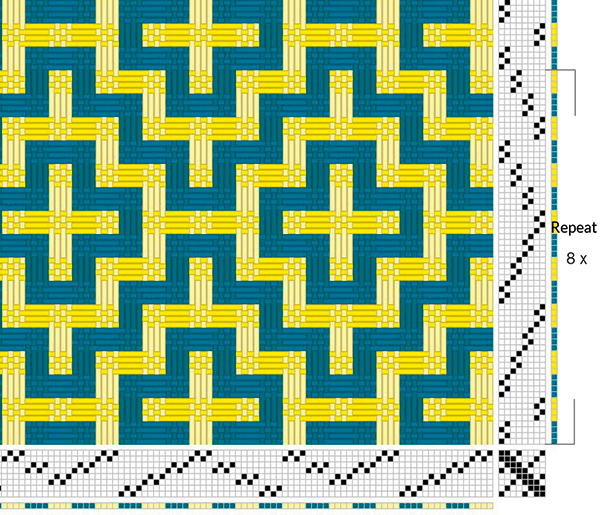
Loop – square cushion
WEFT YARN needed
Dark petroleum (3141) 60 g and mint green (1041) 60 g.
Tassels: 1 g mint green (1041) & 3 g yellow (1171) per tassel.
INSTRUCTIONS FOR WEAVING
Weave 2 cm with scrap wool yarn using straight treadling. Weave the repeat for 16 times. The length of the fabric was approx. 103 cm. Weave 2 cm with scrap yarn at the end.
The repeat was approx. 6,5 cm.
The patterned fabric was 93 x 43,5 cm off the loom.
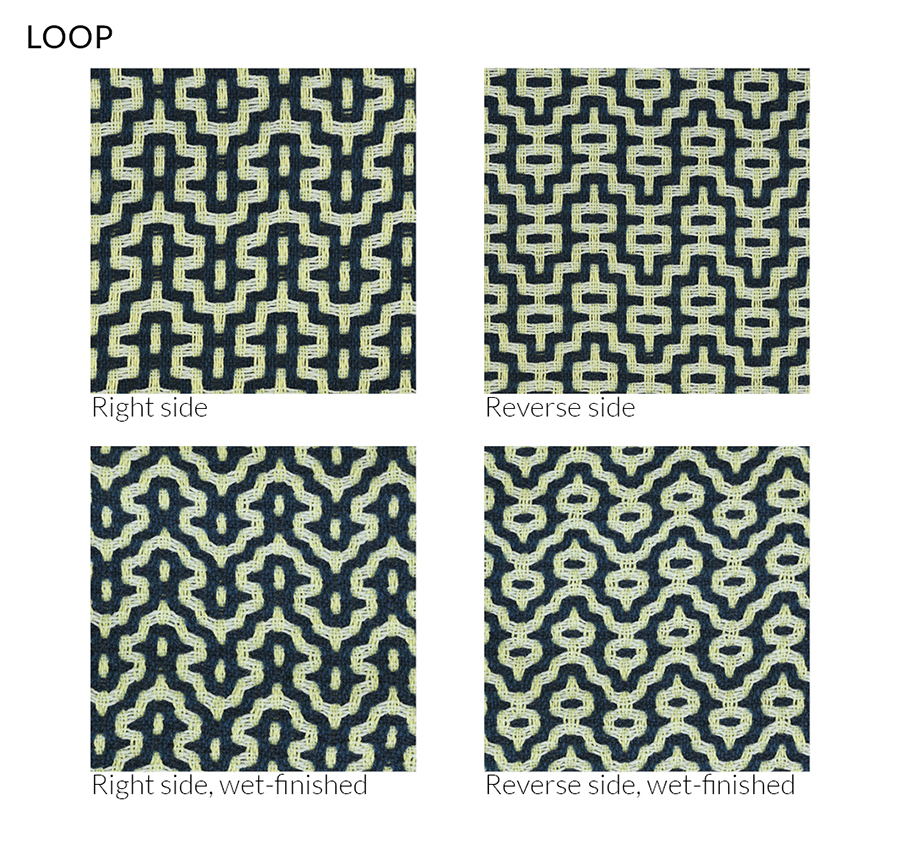
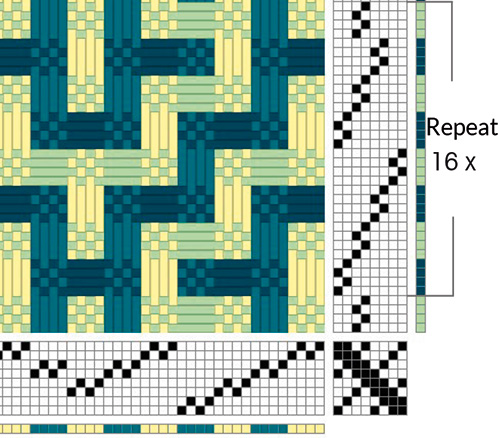
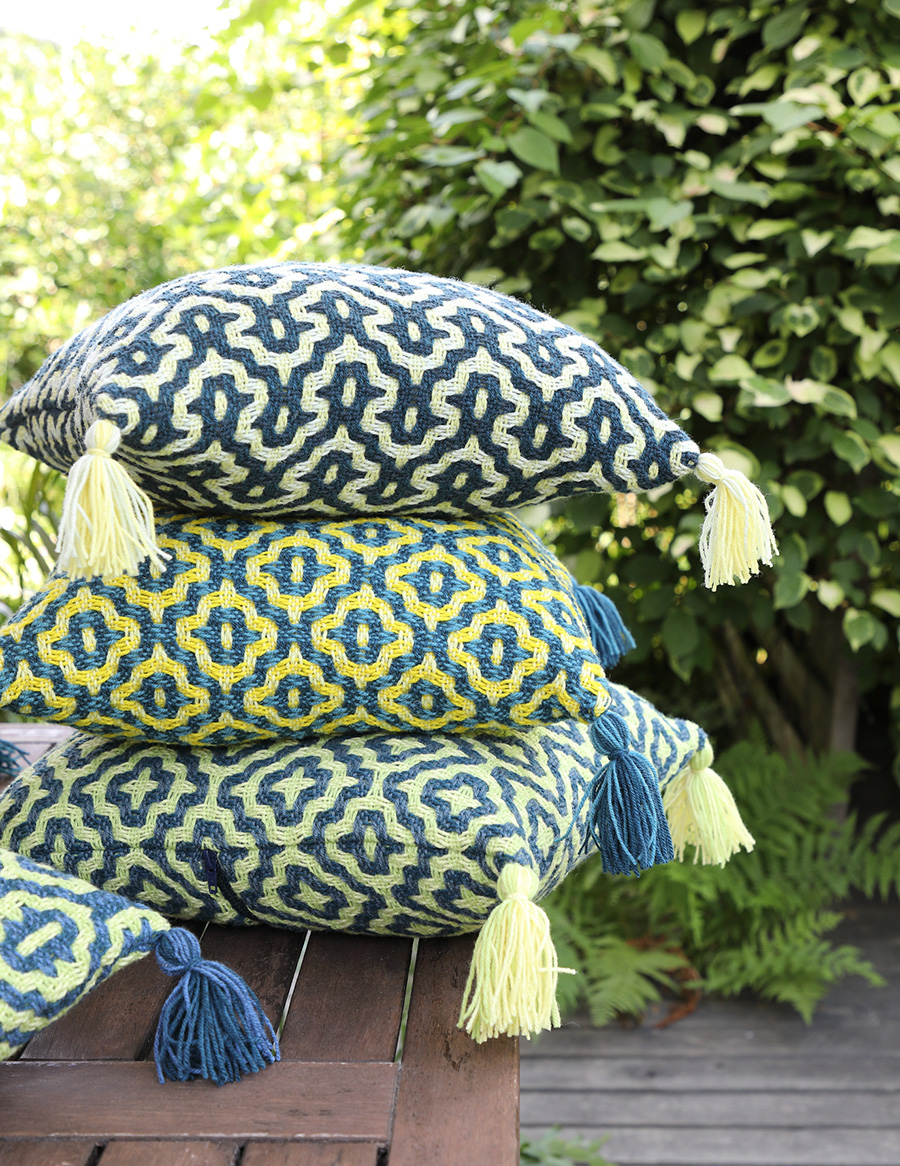
Small Cross – neck cushion
WEFT YARN needed
Dark petroleum (3141) 33 g and yellow (6421) 34 g.
Tassels: 1 g yellow (6421) & 3 g yellow (1171) per tassel.
INSTRUCTIONS FOR WEAVING
Weave 2 cm with scrap wool yarn using straight treadling. Weave the repeat for 9 times plus the extra picks to balance. The length of the fabric was approx. 60 cm. Weave 2 cm with scrap yarn at the end. The repeat was approx. 6,6 cm.
The patterned fabric was 53,5 x 43 cm off the loom.

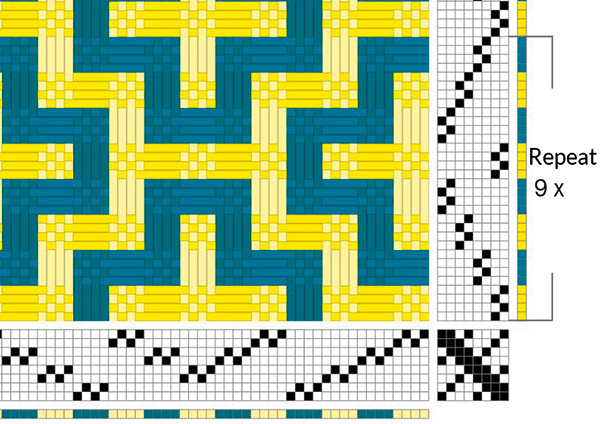
Lemon – neck cushion
WEFT YARN needed
Blue (3283) 35 g and light green (6431) 36 g.
Tassels: 1 g blue (3283) & 3 g petroleum (3343) per tassel.
INSTRUCTIONS FOR WEAVING
Weave 2 cm with scrap wool yarn using straight treadling. Weave the repeat for 5 times plus the extra picks to balance. The length of the fabric was approx. 64 cm. Weave 2 cm with scrap yarn at the end.
The repeat was approx. 12,6 cm.
The patterned fabric was 57,5 x 43 cm off the loom.
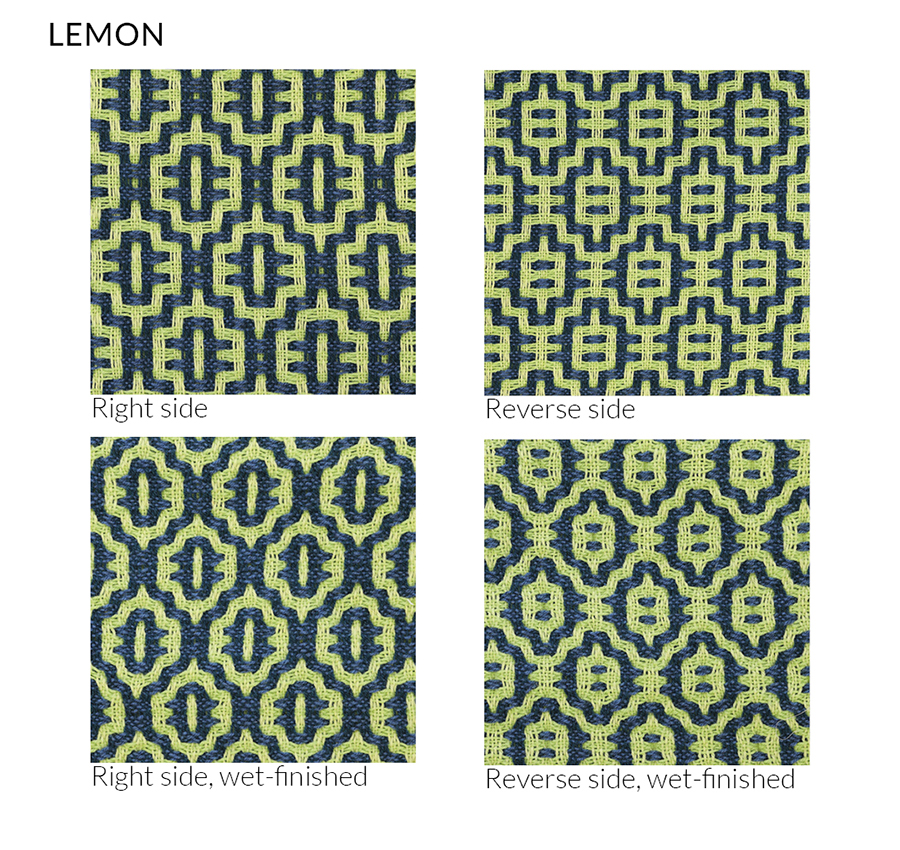

Labyrinth – neck cushion
WEFT YARN needed
Dark green (2243) 44 g and yellow (1171) 29 g.
Tassels: 1 g dark green (2243) & 3 g petroleum (3343) per tassel.
INSTRUCTIONS FOR WEAVING
Weave 2 cm with scrap wool yarn using straight treadling. Weave the repeat for 4 times but leave out the last 4 picks. The length of the fabric was approx. 64 cm. Weave 2 cm with scrap yarn at the end.
The repeat was approx. 13 cm.
The patterned fabric was 56 x 43 cm off the loom.
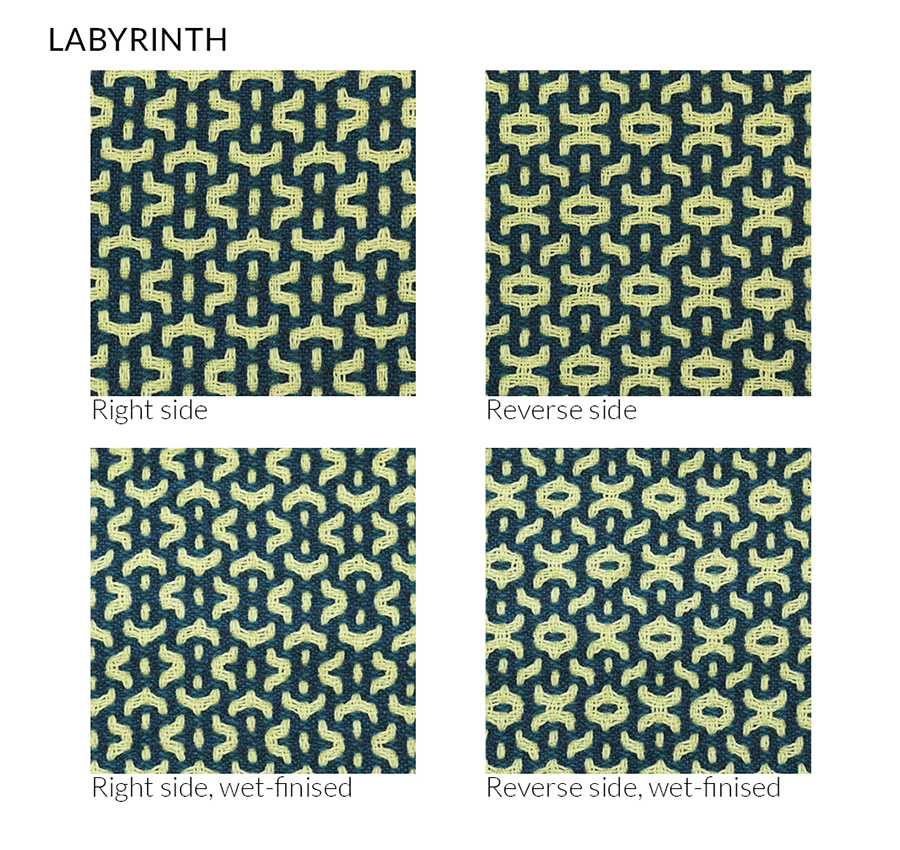
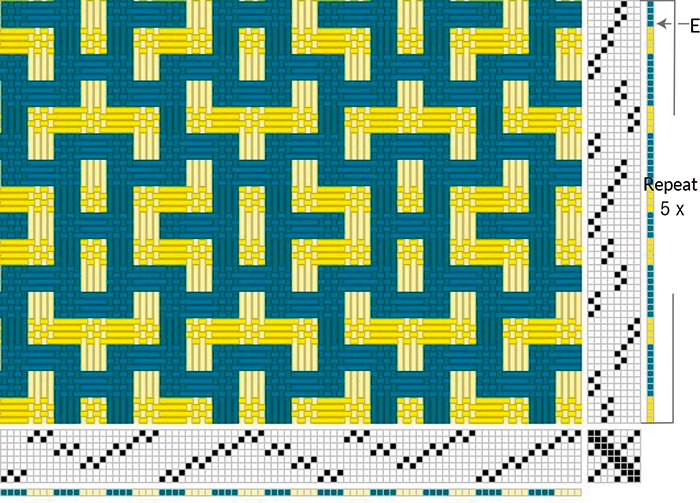
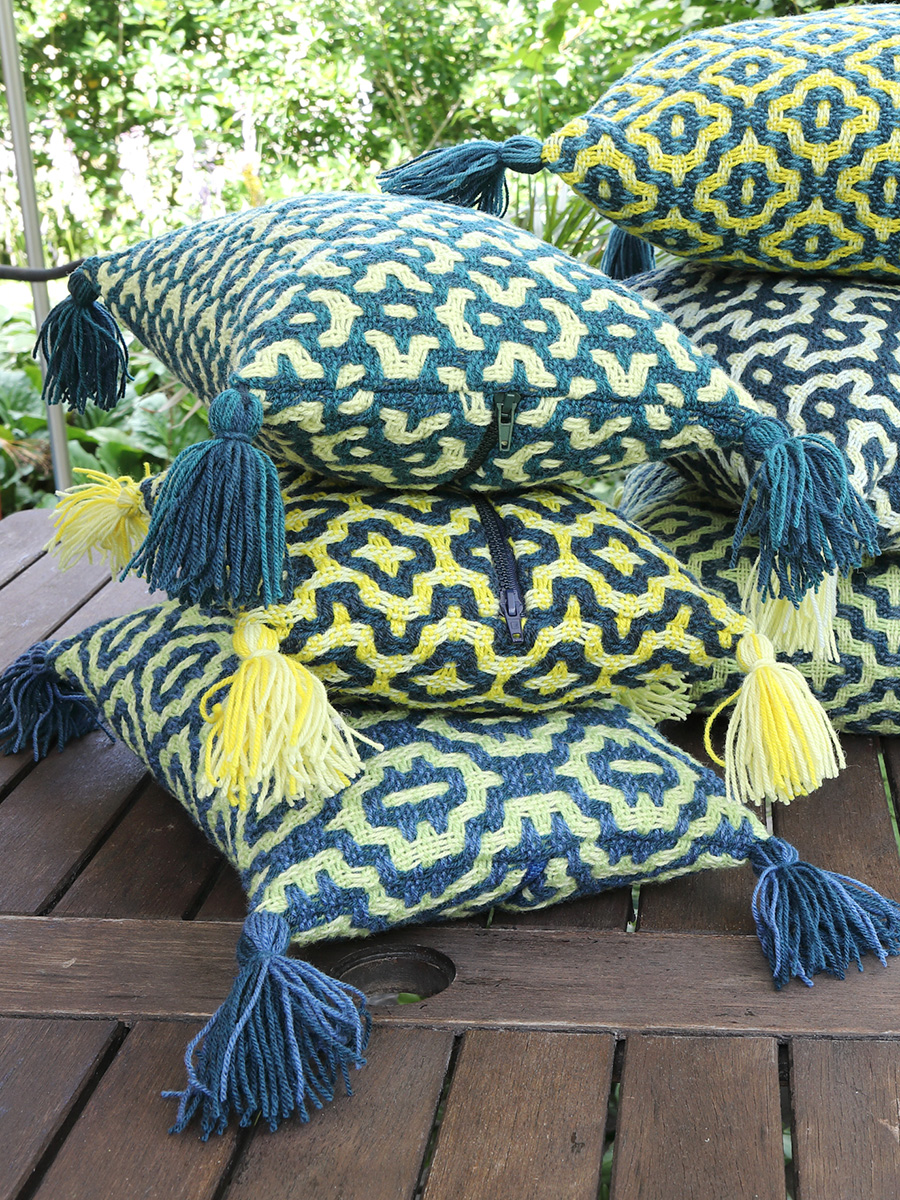
Finishing for all the cushions
Soak the fabric in lukewarm water and move slowly and gently in the water. Dry flat.
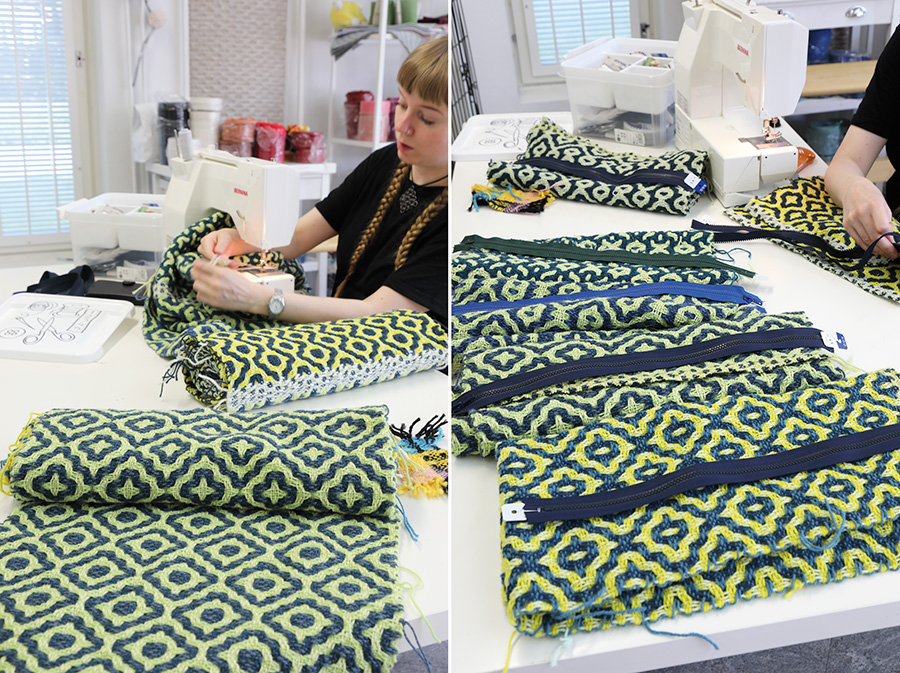
1. Sew 3-step zigzag on top of the scrap yarn at the ends of the pieces and cut apart.
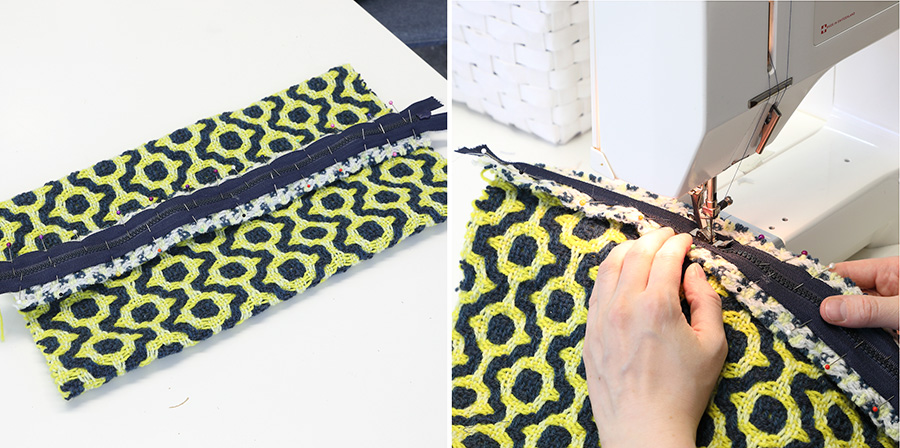
2. Sew a 45 cm long zipper symmetrically at the cut ends of the piece to create a cylinder-shaped piece. Don’t topstitch because it would be visible in an unfavourable way.
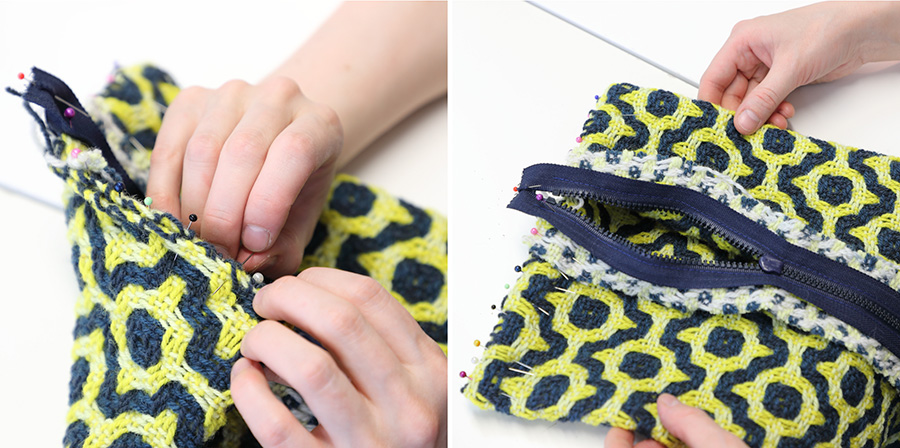
3. The back side facing, pin and sew the side seams in a way that the zipper remains in the middle of the cushion. Match up the same coloured wefts in the sides to make the pattern continue over the side seam.
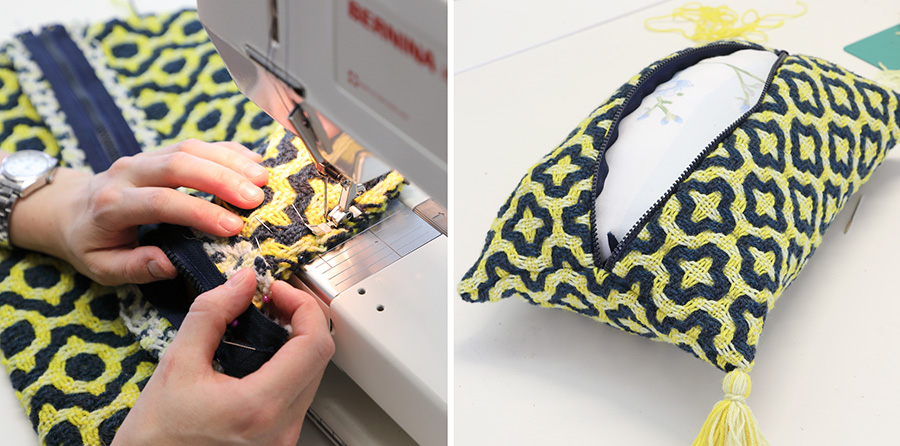
4. Sew the side seams 6 ends from the selvedge (approx. 1 cm from the edge). Turn the piece.
Sew or buy matching sized inner cushions.



